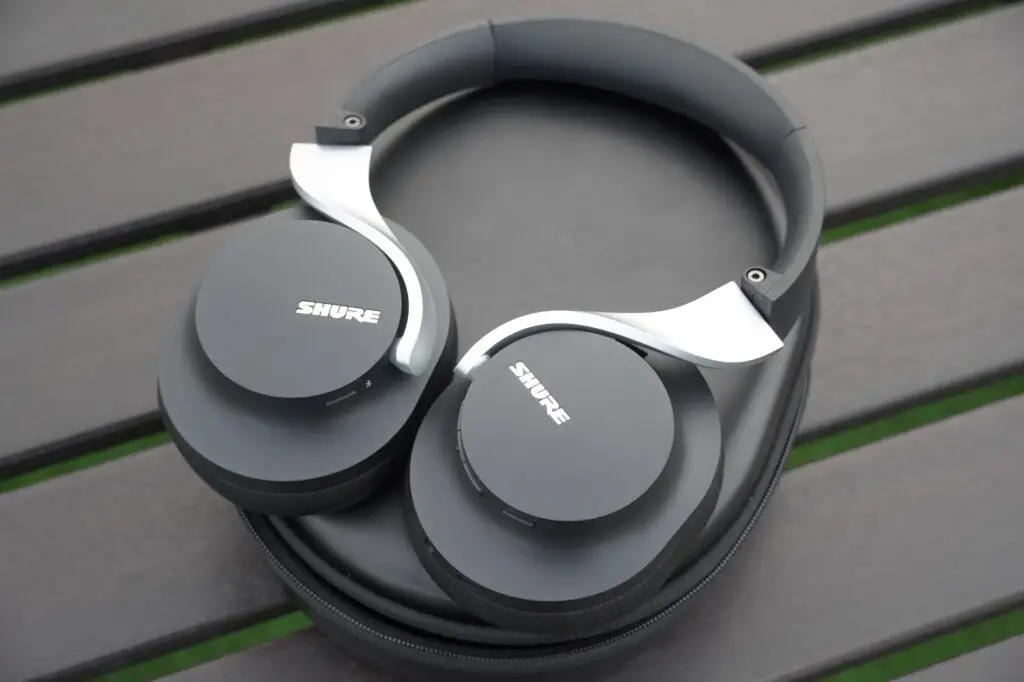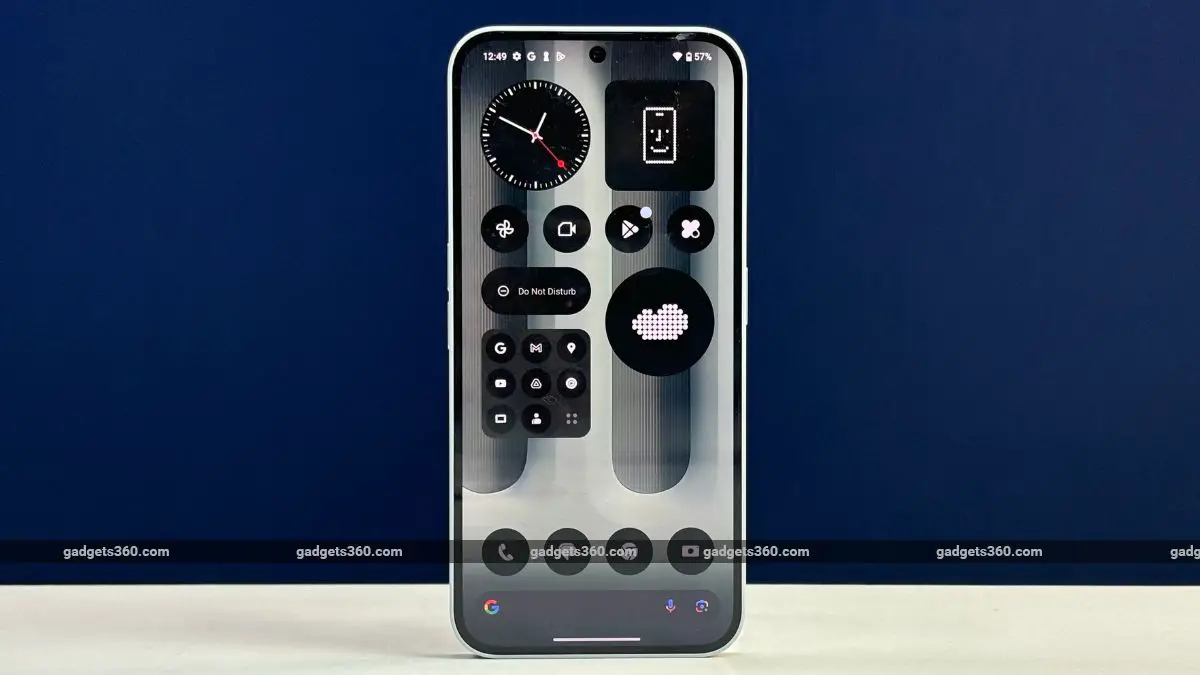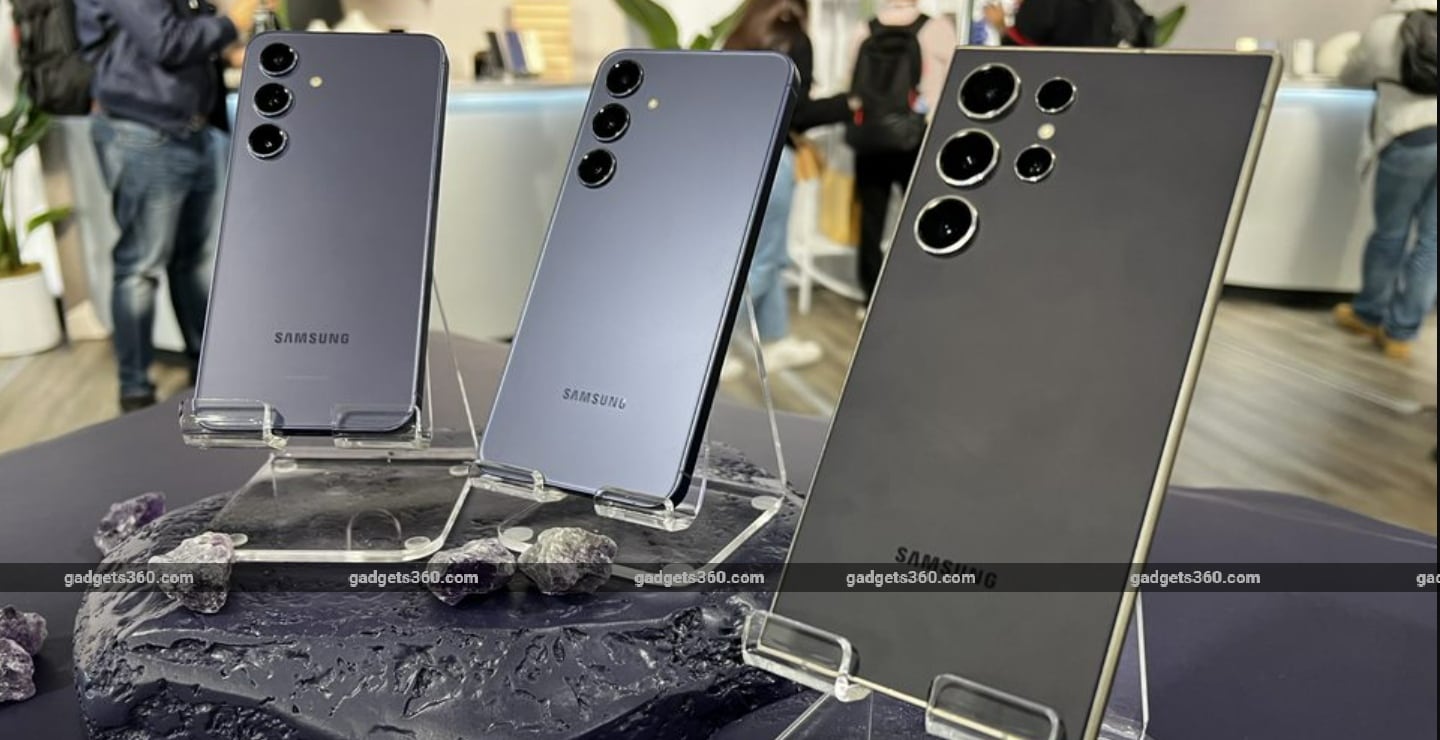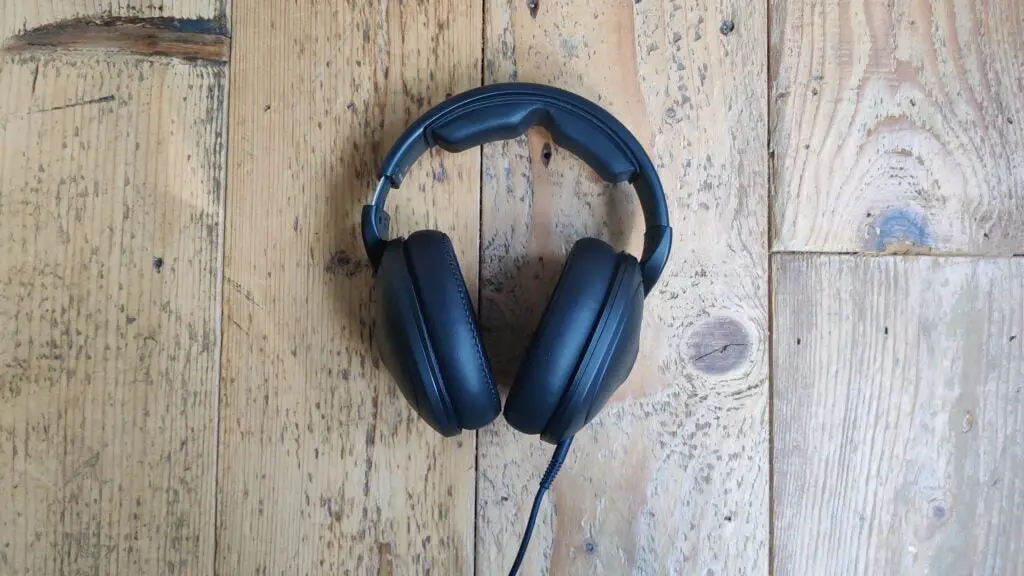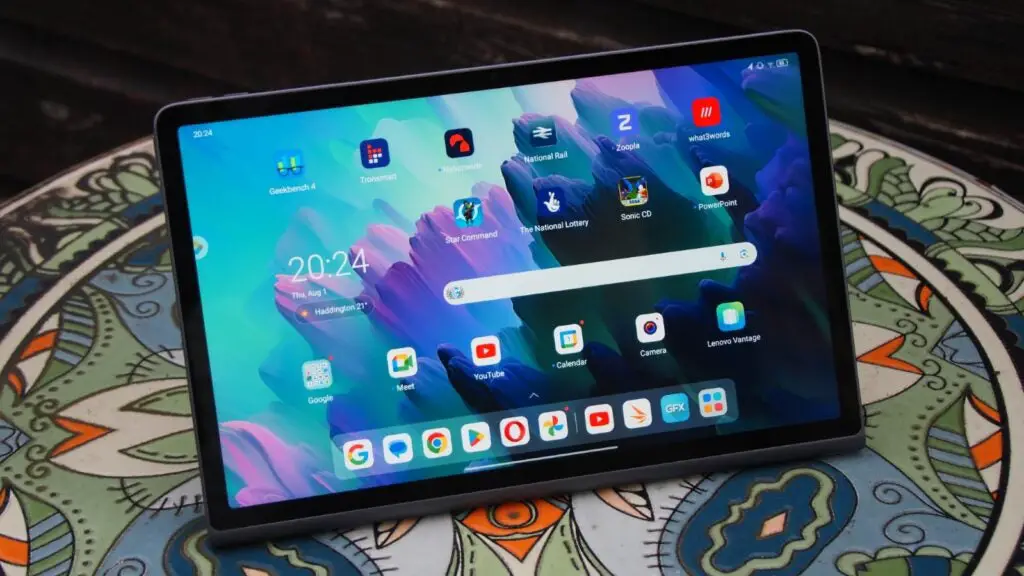Verdict
It’s a mixed bag of performance for the Aonic 40. Shure’s affordable over-ears put in an excellent performance as far as sound, call quality, and battery life are concerned; but they’re not the most comfortable and the ANC is not the strongest either
Pros
- Crisp, energetic, flowing sound
- Long battery life
- Good for calls
Cons
- Not the most comfortable to wear
- Patchy wireless performance in busy areas
- Noise-cancellation not the strongest
Key Features
- BluetoothBluetooth 5 with multipoint support and aptX HD streaming
- ANCActive Noise-Cancellation with Environmental mode
- Call qualityUse the built-in mic for online conference calls
Introduction
For a brand as venerated in the audio market as Shure, a company that’s been around since 1925 and wears its heritage like any person would wear a pair of headphones, the brand’s first pair of wireless headphones arrived in 2020.
And since then Shure has wasted no time in launching more. In a market ripe with options, there have been successive Aonic branded headphones that look to take advantage of the popularity wireless headphones find themselves in.
The Aonic 40 aren’t necessarily a sequel to the original Aonic 50 but a younger sibling, and like siblings it’s the same in some ways – and different in others. They’re smaller, more suited for portable use yet still pack that powerhouse Shure performance.
Design
- Not the most comfortable design
- Foldable
- Physical buttons
Imagine the Aonic 50 but smaller and you’re on the right track with the Aonic 40. It’s the same colour scheme (black and silver), though the 40 looks and feels less sophisticated, the materials used feel more plastic, in particular the yoke that connects the headband to the earcups.
They’re smaller, so if your head is of bigger proportions, the Aonic 40 aren’t as snug a fit. For my ears, they’re a little too small and it’s tricky to get a good fit while wearing glasses, plus the headband digs into the top of my head after a while. The Aonic 40 are just about tolerable enough in terms of comfort, but certainly not the most comfortable pair of over-ears.
They’re foldable and slot into a carry case that comes with a USB-C charging cable and 3.5mm audio cable. You’ve got a choice between black and a more striking white/tan finish.
You’ve got buttons on either earcup: power on the left and playback/volume/ANC on the right. The buttons are quite cushy to press and make for a good point of interaction. There’s no built-in voice assistance but you can access your mobile phones’ voice assistant through the controls.
Features
- 25 hours battery
- Active Noise-Cancellation
- aptX HD Bluetooth
Shure has released three wireless over-ears and each one has had a different noise-cancellation system. They all have their ups and downs.
The system fitted to the Aonic 40 is fine but if noise-cancellation is important and you want a performance that’s more conclusive, you’d be better off looking elsewhere. Wearing these headphones I can still hear people shuffling by, or a distant motorcycle rumbling past.
It’s effective enough at hushing cars, buses, and louder noises (construction works) and used on a plane it’s not too shabby at quelling people’s voices, but there are better models on the market whether that’s the Cambridge Melomania P100 or the Sennheiser Accentum Plus Wireless. The noise-cancellation isn’t the strongest aspect of the Shure’s performance.
The transparency (or Environmental mode) is also fine at letting more sounds in, and it does so in a clear manner with no change to how audio sounds when activated. It’s adjustable in the ShurePlay app if you want to change how much noise is let in.
Bluetooth support equates to v5.0 with SBC, AAC, aptX and aptX HD streaming; and in terms of the connection between my phone and the headphones, the Aonic 40 could be better. In busy areas, the music would skip and skip. Bluetooth multipoint is supported.
Call quality, however, is near faultless. The person on the other end of the call observed that there were no sounds heard other than people’s voices as they walked. None of the traffic I walked past had any impact on the call performance. They did mention my voice went a little low at one point but that wasn’t a big issue in a five-minute+ call.
Shure claims 25 hours of battery life for the Aonic 40, and a two-hour drain at 50% volume resulted in a 5% drop. That would make battery life closer to 40 hours (if my maths is correct), so these headphones potentially have much more longevity than even Shure would say. Fast charging provides five more hours from a 15-minute charge.
The ShurePlay app offers the means to customise the noise-cancellation, battery charging settings and what the headphones can do when connected over USB (you could use these headphones for conference meetings if you like).
There is a range of equalizer presets to choose from and a rather complex custom EQ that allows you to shape the frequency range, gain, and bandwidth. And, you’ve also got a Hi-res music player functionality, so you can play files straight from your phone.
Sound Quality
- Assertive bass performance
- Sharp and bright highs
- Detailed midrange
As far as sound quality goes, Shure’s wireless headphones have been some of my favourites. While they have flaws in other areas, I feel with each headphone they’ve squeezed as much performance and tuning as they could have, and like the original Aonic 50 and the Aonic 50 Gen 2, the Aonic 40 are a confident, free-flowing pair of over-ears.
Compared to the Aonic 50 Gen 2, they’re a step down in performance but on the whole, they share characteristics – what you get from the flagship model is simply more of what’s inside the Aonic 40.
With The Prodigy’s Omen the Aonic 40 output strong bass delivery and energy, but drop in size from the Gen 2 Aonic 50’s drivers (50mm) to the Aonic 40 (40mm) results in a soundstage that isn’t as big.
The way both headphones organise the soundstage is the same, you just get a more spacious performance with the Aonic 50. What you get with the flagship pair is more of what’s already in the Aonic 40: more energy, a bigger soundstage and increased levels of clarity and detail. Considering the price the Aonic 40 have dropped to in some places, I’d wager some can live with that.
Regardless, the Aonic 40 are an energetic and crisp listen across most music genres. There’s an assertiveness to how it describes bass in Hard Life’s Skeletons that offers more depth and richness than the Sennheiser Accentum Plus Wireless (as well as a more expansive soundstage). Where the Sennheiser sounds a little more sedate and smooth, the Shure remains the more gripping listen of the two.
The levels of midrange detail and both high and crisply conveyed, while high frequencies are sharp, clear and bright with Andreas Ihlebæk’s Come Summer without falling into the trap some headphones have of sounding harsh or distorted. They’re an impressively tuned pair of headphones, and if you look around, they’re available for an entirely gettable price.
Latest deals
Should you buy it?
Impressive sound for its knockdown price
Easily one of the better-sounding over-ears, especially if you get them for less than £150.
A mixed performance
Good sound, long battery, great call quality are hampered by average noise-cancellation, a design that’s uncomfortable, and patchy wireless performance in busy areas.
Final Thoughts
It’s been a few years since the Shure Aonic 40 launched, but even when they first arrived on scene, I felt they were compromised in some ways. The design isn’t the most comfortable to wear for prolonged periods, and the noise-cancelling isn’t the strongest at repelling sounds.
But they do carry Shure’s trademark sound with a crisp, energetic performance and considering you can find them for around £135, they’re easily one of the best-sounding headphones at that price. For that alone, you may want to forgive.
You may want to consider them as a cheaper alternative to mid-range over-ears such as the Cambridge Melomania P100, the Sennheiser Accentum Plus Wireless or the still available Sony WH-1000XM4.
And although they don’t sound as good as the Shure, there is the Sony WH-CH720N over-ears, which are one of the best budget over-ears below £100 to think about too.
How we test
We test every set of headphones we review thoroughly over an extended period of time. We use industry standard tests to compare features properly. We’ll always tell you what we find. We never, ever, accept money to review a product.
Find out more about how we test in our ethics policy
Tested across several months
Tested with real world use
Battery drain carried out
You might like…
FAQs
Does the Shure AONIC 40 support LDAC streaming?
There’s no support for LDAC on this headphone. It does support up to aptX HD streaming.
Full specs
UK RRP
USA RRP
Manufacturer
IP rating
Battery Hours
Fast Charging
Weight
ASIN
Release Date
Audio Resolution
Driver (s)
Noise Cancellation?
Connectivity
Colours
Frequency Range
Headphone Type
Shure AONIC 40
£215
$249
Shure
No
25
Yes
313 G
B09M94NK36
2022
SBC, AAC, aptX, aptX HD
40mm
Yes
Bluetooth 5
Black/Silver, White/Tan
20 20000 – Hz
Over-ear

